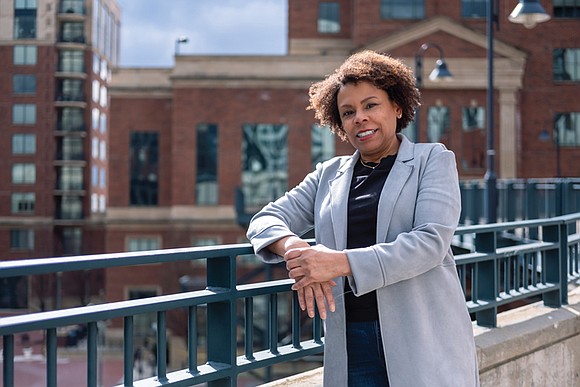Coming home, by Jennifer Robinson
A hipper, more vibrant Richmond is sweet surprise for former New Yorker
3/7/2024, 6 p.m.

Byrd Park was the place to be on warm Sunday afternoons in the 1980s. I was in high school and all of young, black Richmond gathered there. Picture the scene from Will Smith’s 1991 hit, “Summertime.”
“Everybody came lookin’ real fine. Fresh from the barber shop or fly from the beauty salon.”
It was a big, old-school outdoor party. Muscle cars, two-tone Firebird Trans Ams, and Camaros lined the lake with car doors and trunks flung open in a contest to see who had the baddest sound system.
Songs by R&B groups such as Zapp & Roger, The S.O.S. Band, and The Gap Band filled the park until dusk. Kids from then Jefferson-Huguenot-Wythe and Marshall-Walker high schools were always there.
With feelings of isolation at my predominately white high school in Henrico County, I never wanted to miss Byrd Park on Sundays. My school was just over 10 years into desegregation then, and I found it difficult to thrive.
Although Brown v. Board of Education was decided in 1954, many school systems in the Richmond area remained segregated long after. During the late 1950s and throughout the 1960s, state and local legislative bodies passed Massive Resistance laws, which cut state funding to schools that attempted to desegregate. It wasn’t until 1970 that public schools were finally desegregated through court-ordered busing.
Some of my teachers must have been stragglers from the segregation era because the racism was so blatant at Hermitage High School. I recall leaving one teacher’s American history class thinking the South had won the Civil War, conflicting with the reality that the Union won. I endured three years of being ignored in my homeroom teacher’s class, where I was the only Black student. I’m not sure what angered me more, the blatant racism or how normalized it was. I just wanted out. I couldn’t wait to get away from the prickly tinge of racism, and I never wanted to return. I left after my high school graduation and never looked back.
In the decades I’ve been away from Richmond, I traveled and lived in three major U.S. cities. I’ve finally returned home to Richmond, much to the surprise of friends and family.
Quite frankly, it surprised me, too. I’d been in New York the past 25 years—the longest I’ve lived in any place. But it was time to come home. The lower cost of living, slower pace, an aging parent, and preparing for retirement were all a part of my decision to leave the conveniences of a big city behind.
Despite its racist past, Richmond is my home. I’m bursting with pride that my hometown, the Capital of the Confederacy, has removed the massive structures along Monument Avenue that paid homage to Confederates. Nothing can replace the memories of shopping at Thalhimer’s or Miller & Rhoads in Downtown, where Santaland completely enchanted me as a child. I’ll never forget seeing the Jackson 5 in concert or the Ringling Bros. and Barnum & Bailey Circus at the now-defunct Richmond Coliseum.
However, I see Richmond changing and experiencing population growth, attracting new residents and tourism. I also see a diversity I’ve never seen here. Where I once heard the distinct Richmond-style Southern accent, I now hear an undetectable manner of speaking from store clerks and neighbors, signaling Richmond is no longer a city of locals.
Sadly, it doesn’t quite strike the familiarity of my hometown, but I suppose that comes with change.
My first Uber driver since returning was a Dominican guy with a Spanish accent and Bachata music blaring from his car speakers. I felt like I was back in New York! Since then, I’ve had Uber drivers who hail from many countries. Meeting people from other places has been my biggest surprise and pleasure since returning to Richmond.
I’ve always found that racial and cultural diversity drive growth and revitalization.
Millennials, the next generation of leaders, are claiming Richmond. They’re flocking to places like Manchester from other parts of the country to enjoy Richmond’s lower cost of living and higher quality of life. It’s one of the city’s fastest-growing neighborhoods, and I love Manchester’s artsy vibe. I ventured there during one of my walks along the James River. I stumbled upon the Art Works gallery on Hull Street and had lunch at The Hatch. I felt like a tourist.
I was born in South Side, so it was common for my parents to drive through Manchester to cross the Mayo Bridge. It was such a scary place as a child.
The contrast between what once was an abandoned industrial wasteland transformed into a hip, new neighborhood seemingly occurred in the blink of an eye. My grandfather, Arthur T. Robinson, ran a commercial dry cleaning and laundry business on Hull Street that he started in 1933, aptly called Southside Cleaners. He and his business are gone, but I wonder what he’d think about Manchester and its exploding foodie and vibrant art scenes.
Although I cherish my childhood memories of growing up in Richmond, I haven’t felt overly nostalgic since moving back. Instead, I’m in awe of the city’s transformation.
I left a city that felt stifling and small with a racist past and a determination to cling to an it’s-the-way-we’ve-always-done-it mentality that thwarted its growth. I’ve returned to a revitalized Richmond that rivals any city of its size, attracting new people and changing in ways I never thought possible.
Ms. Robinson is a contributing writer for the Richmond Free Press.







